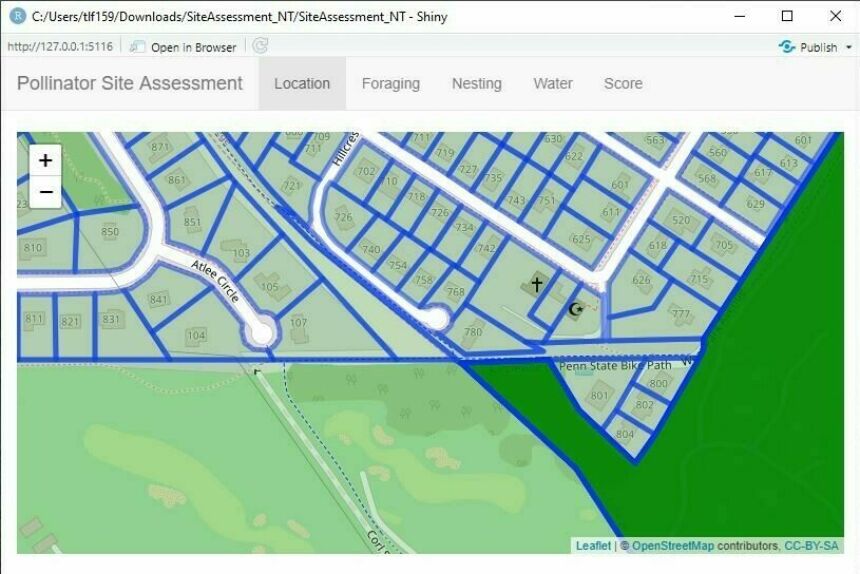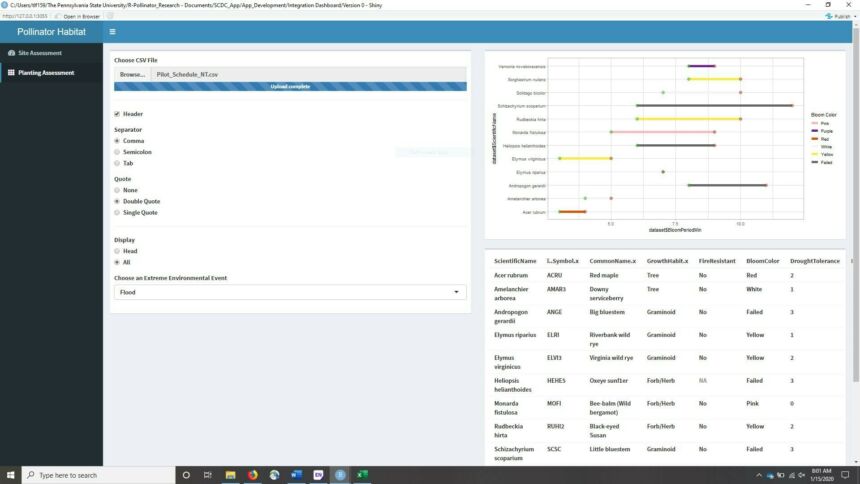
This project presents a new web-based planting design tool for assessing urban pollinator habitat quality and resiliency.
Worldwide, pollinator populations are crashing. This decline is largely due to habitat and plant diversity losses resulted from land development and management practices, homogenous planting design, and climate change. While emerging planting design and site management efforts support pollinators, they often only focus on foraging opportunities and replicate historical plant communities, which are potentially vulnerable to changing climates. Design computing and geospatial analyses can facilitate a better understanding of existing habitat quality and the effectiveness of proposed planting schemes, assisting designers in creating healthy, connected, and resilient landscapes in the face of climate change.
Based on the Xerces Society’s agrarian and rural landscapes pollinator habitat assessment guides, our protocol identifies four critical assessment categories–foraging, nesting, water, and landscape management; evaluates planting resiliency with the measures of plasticity, ecological resilience, and floral diversity; emphasizing bloom phenology and biodiversity; and plant responses to extreme events. The app integrates Rshiny and databases. Plant characteristics are derived from the U.S. Department of Agriculture plant database.
The prototype shows significant potential in allowing designers to rapidly iterate planting design assessments across multiple resiliency factors and visually presenting biodiversity and resiliency deficiencies. However, observations also suggested significant gaps in the USDA plant database concerning plant climate resiliency characteristics. Future research may expand the app to include factors such as plant structural diversity, and explore the use of citizen science to augment the habitat assessment database.
Gallery




